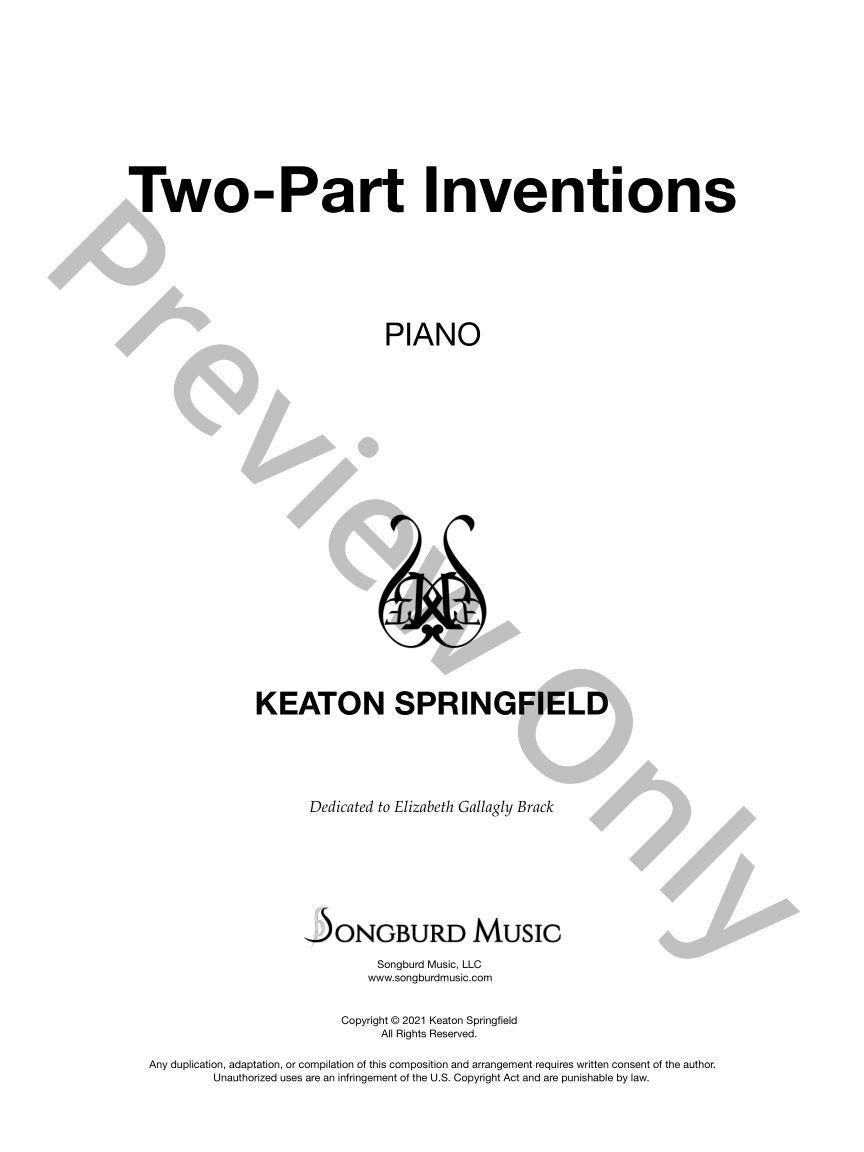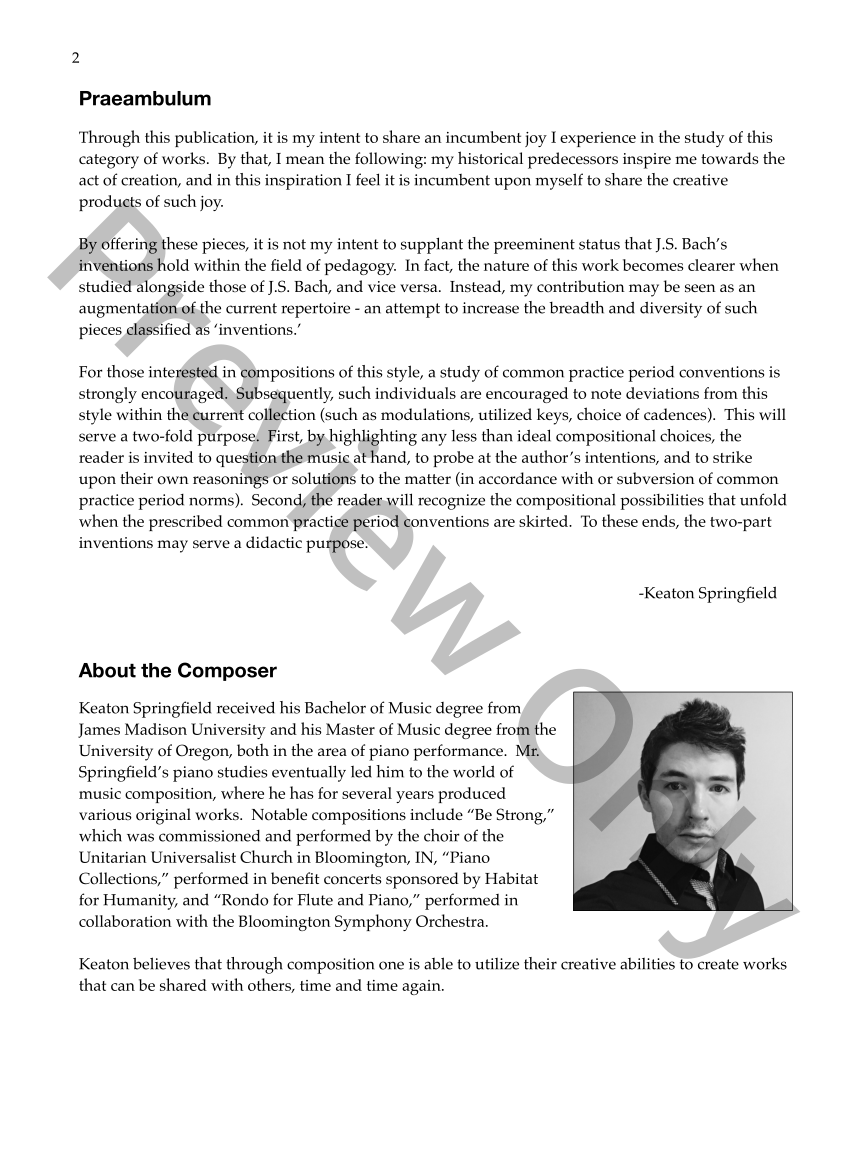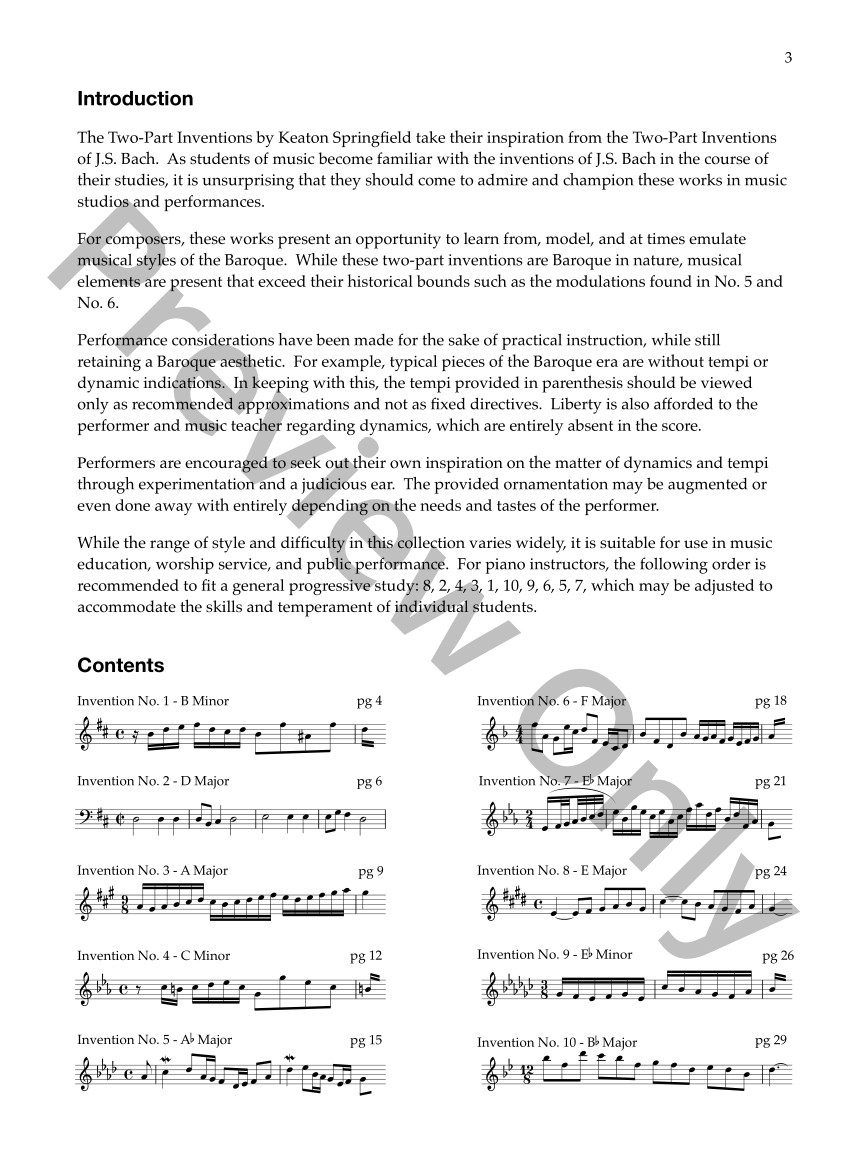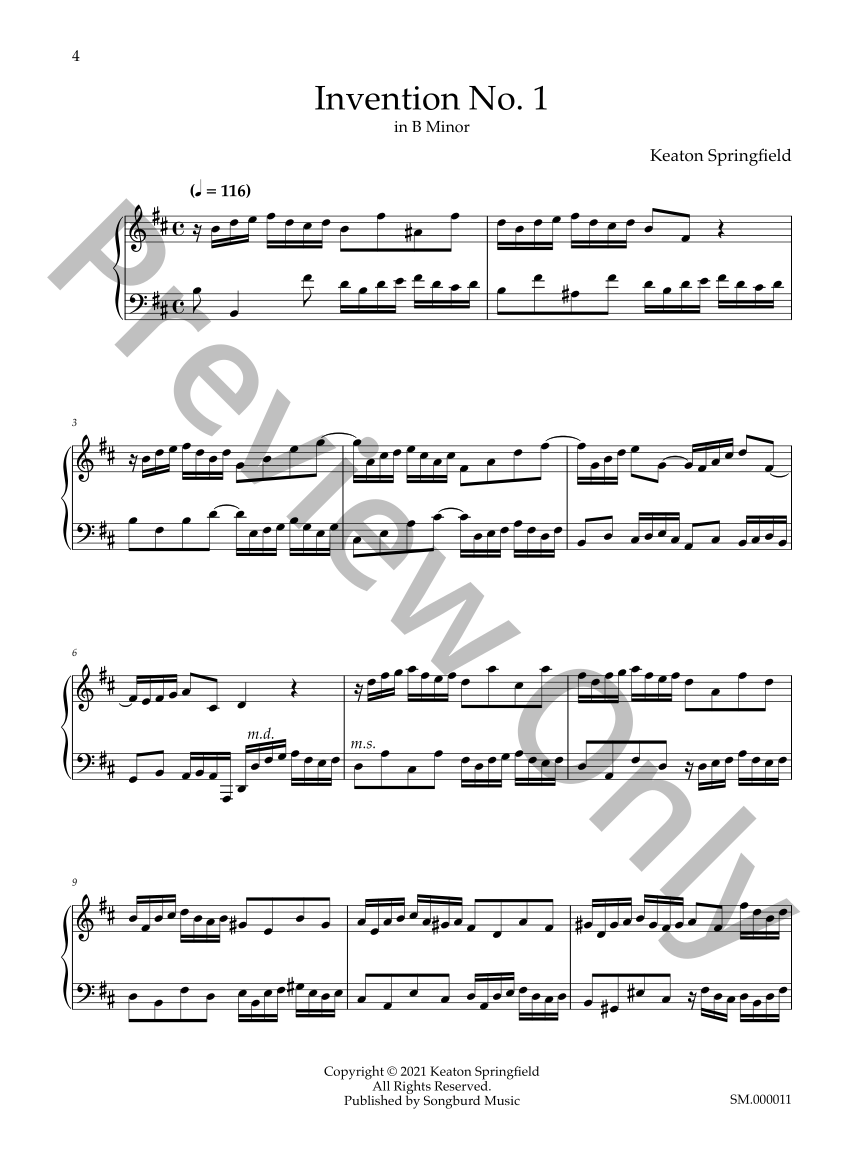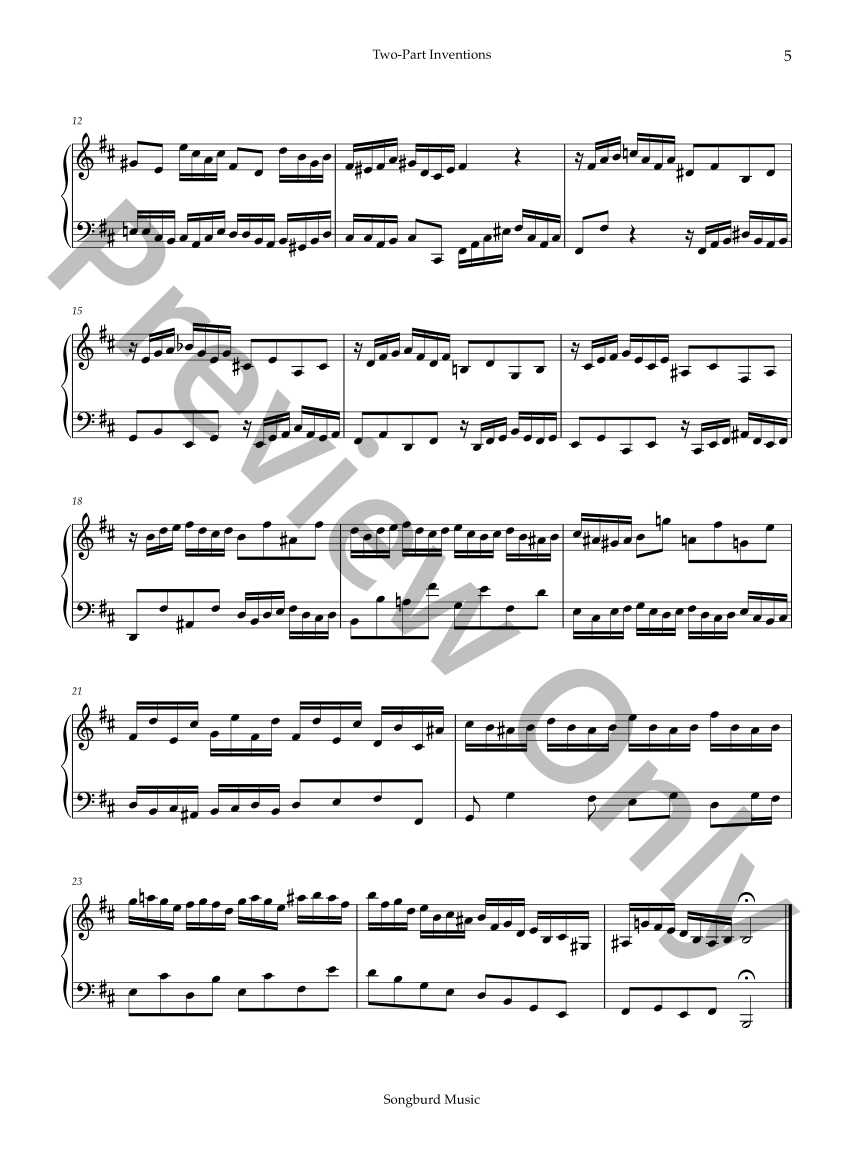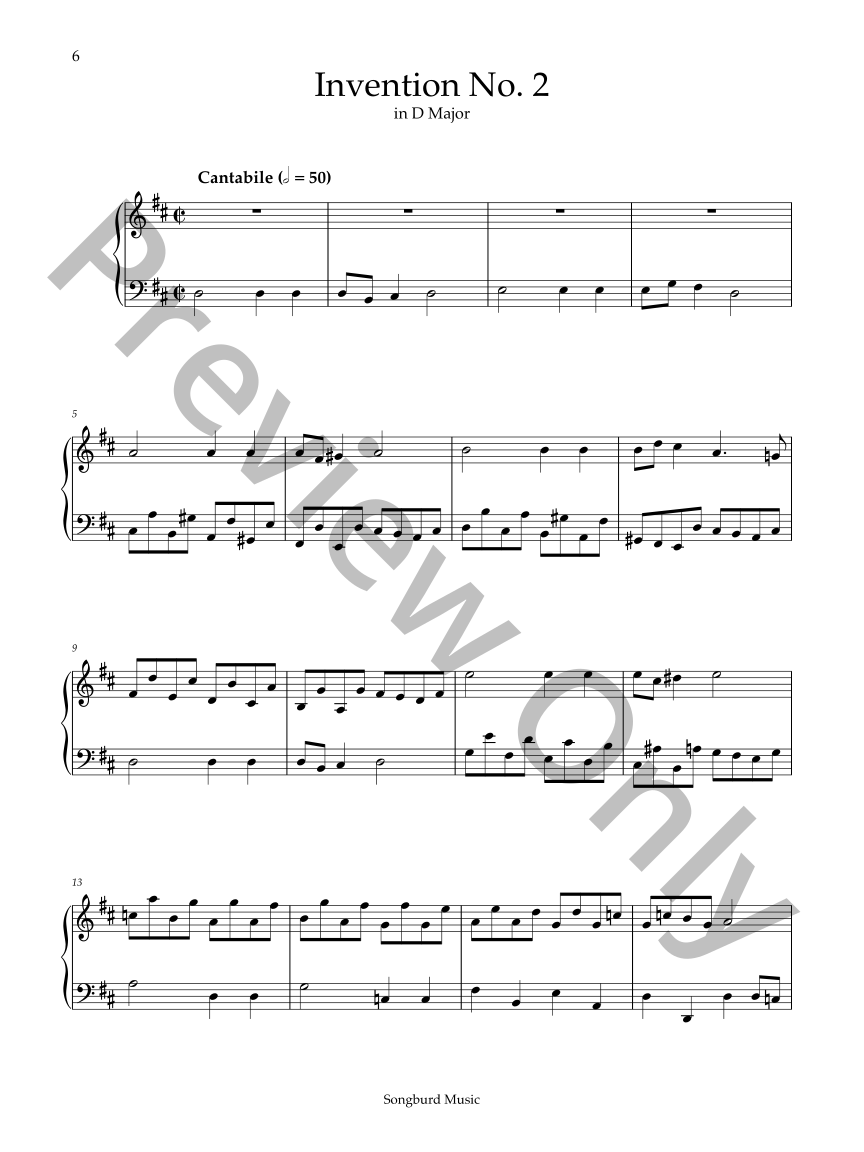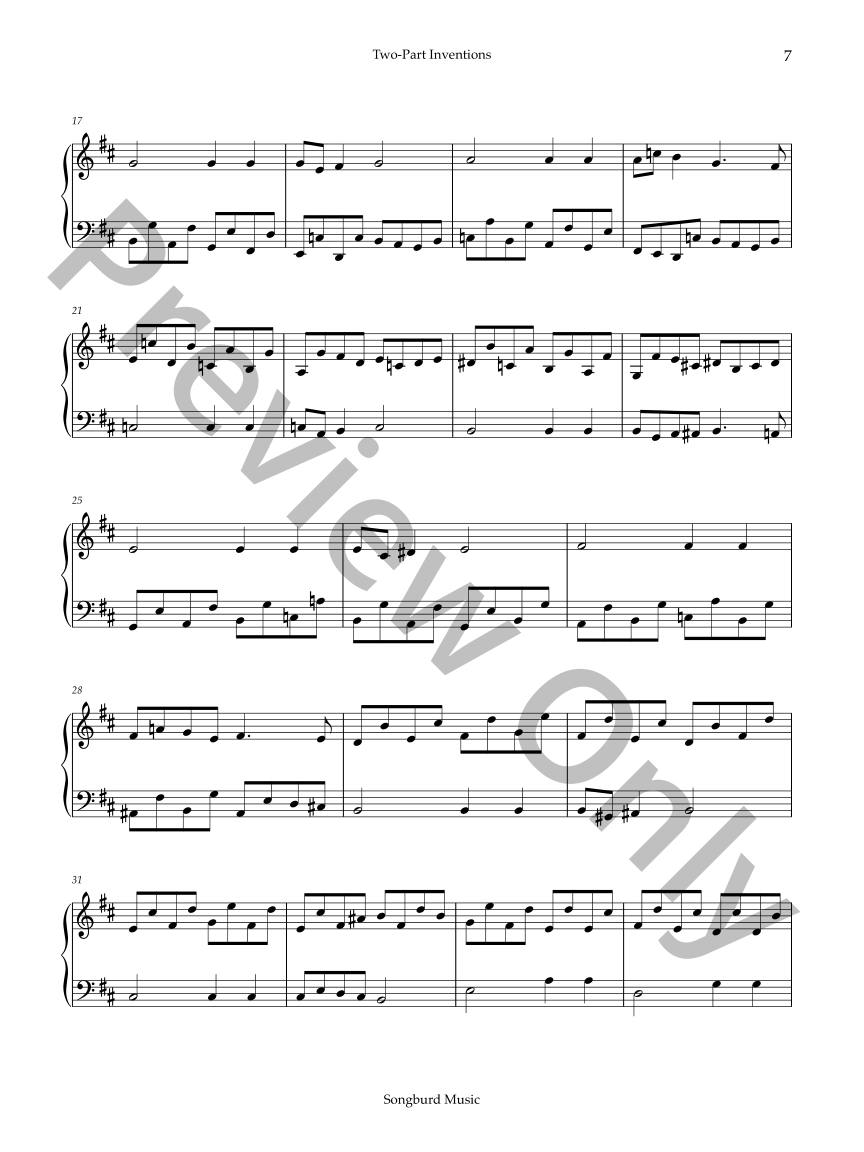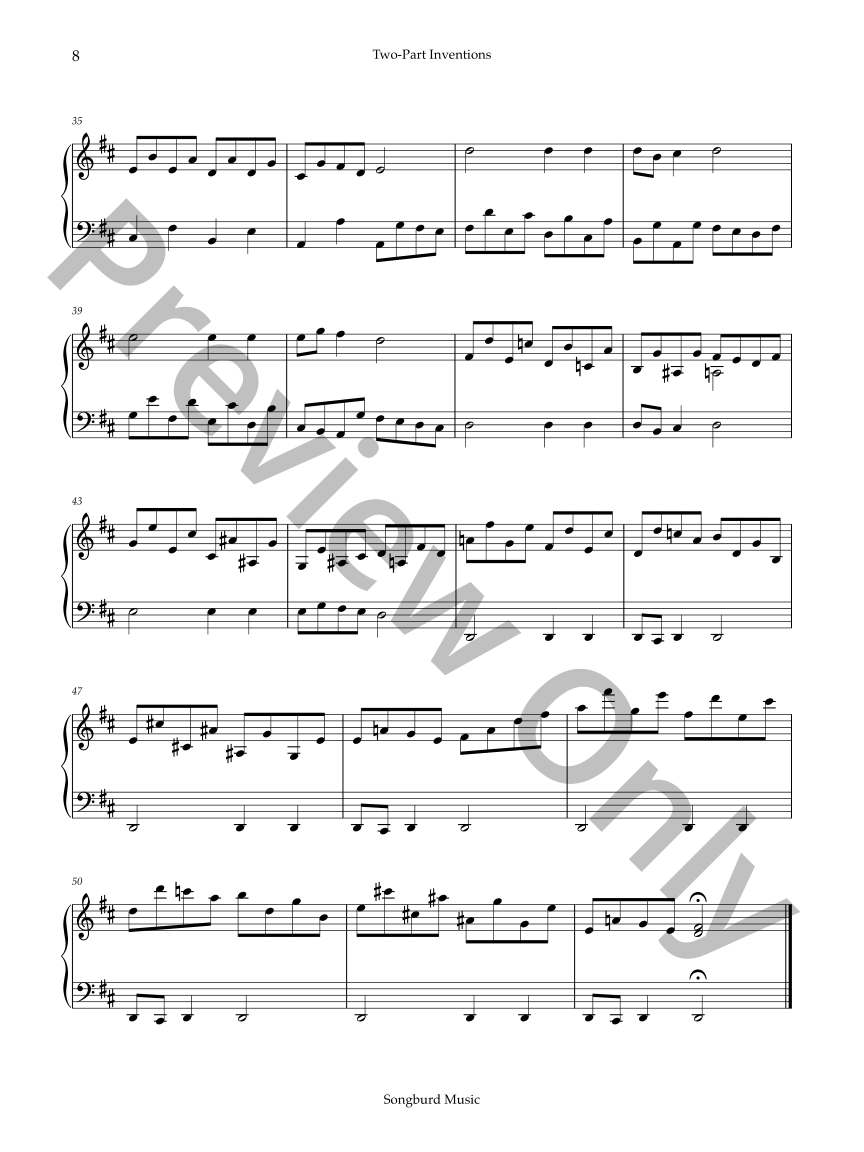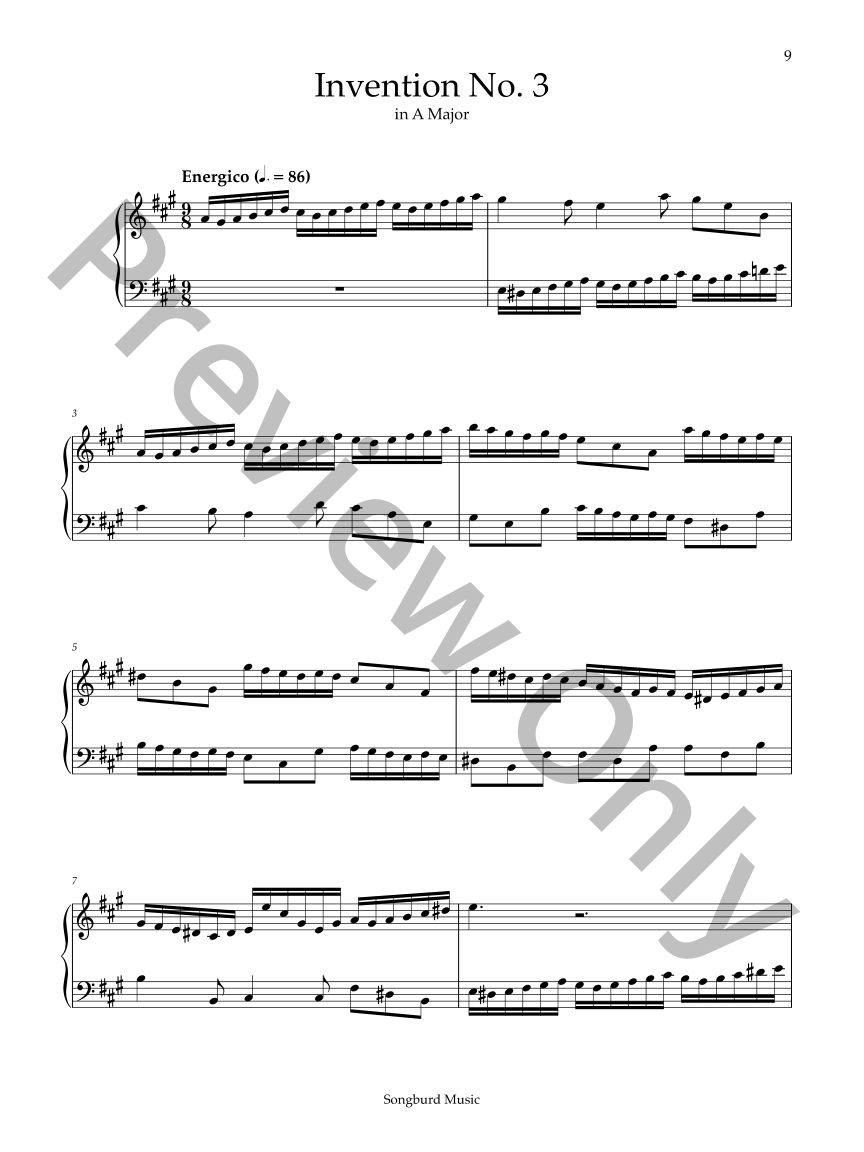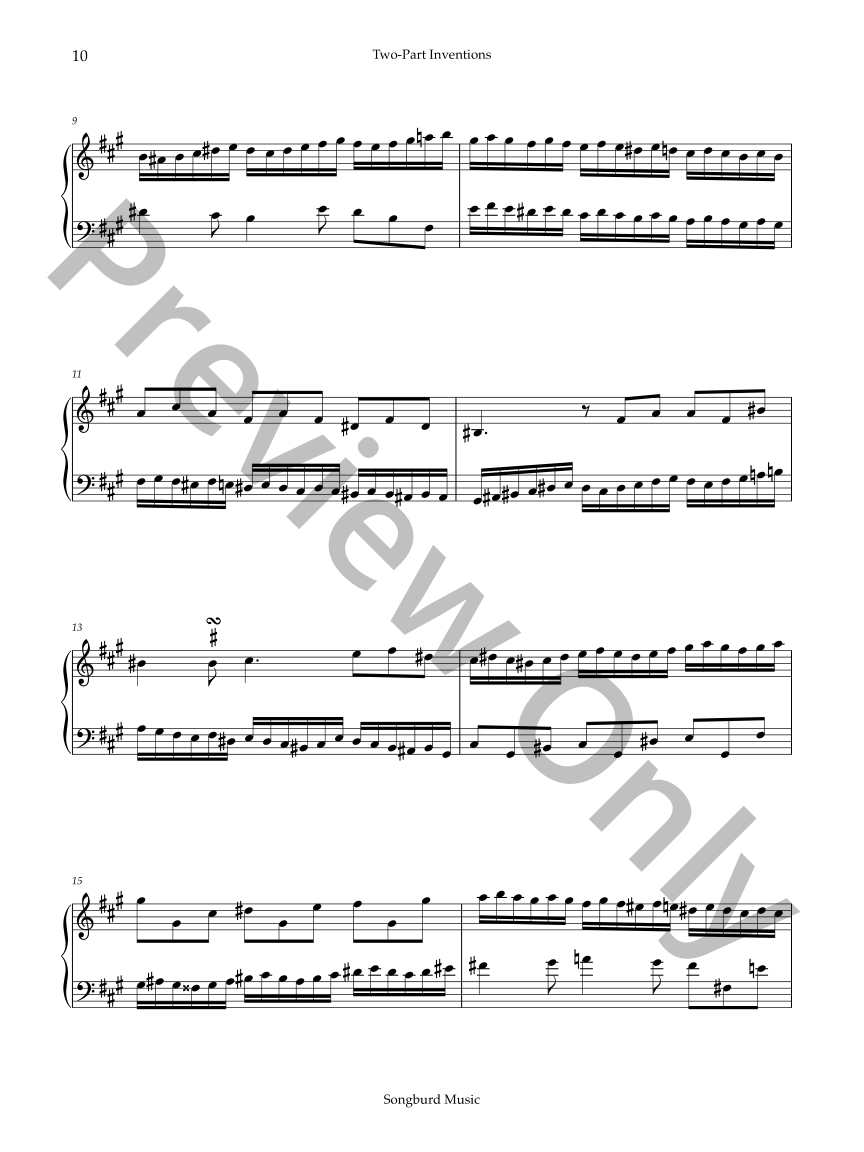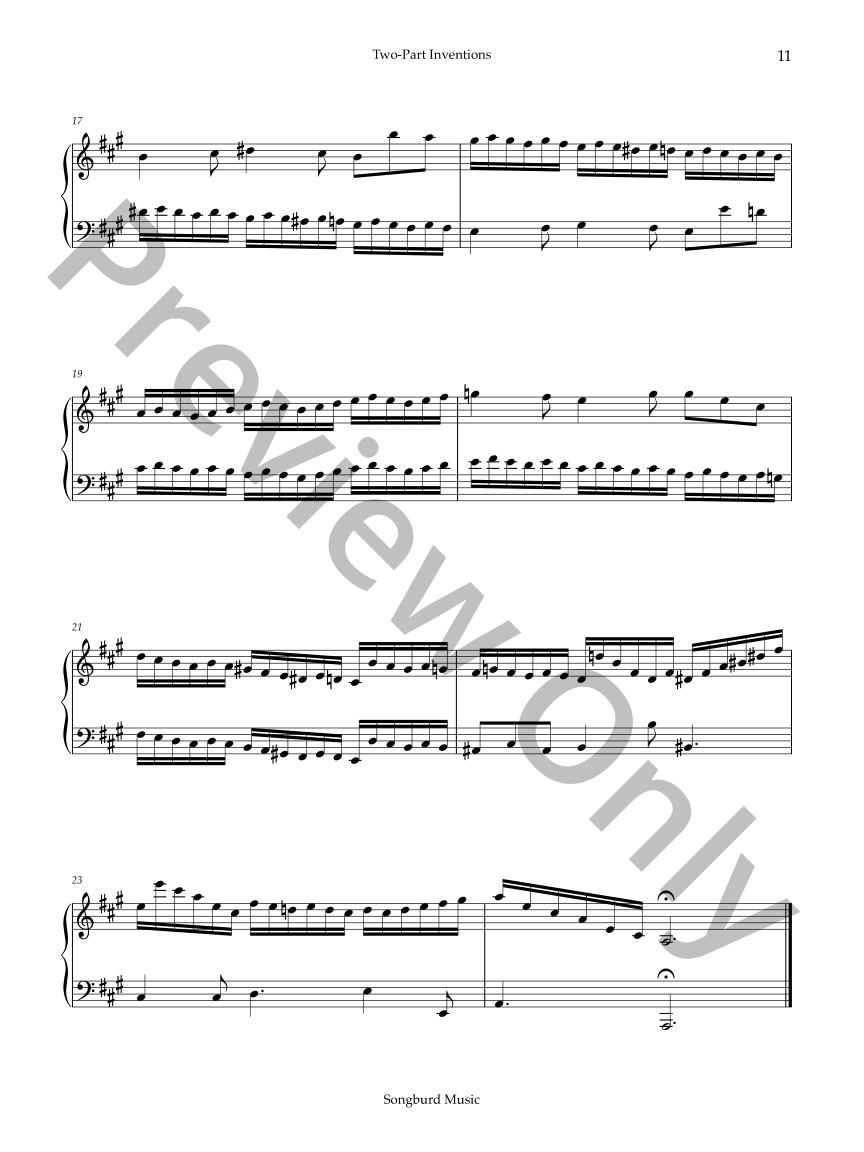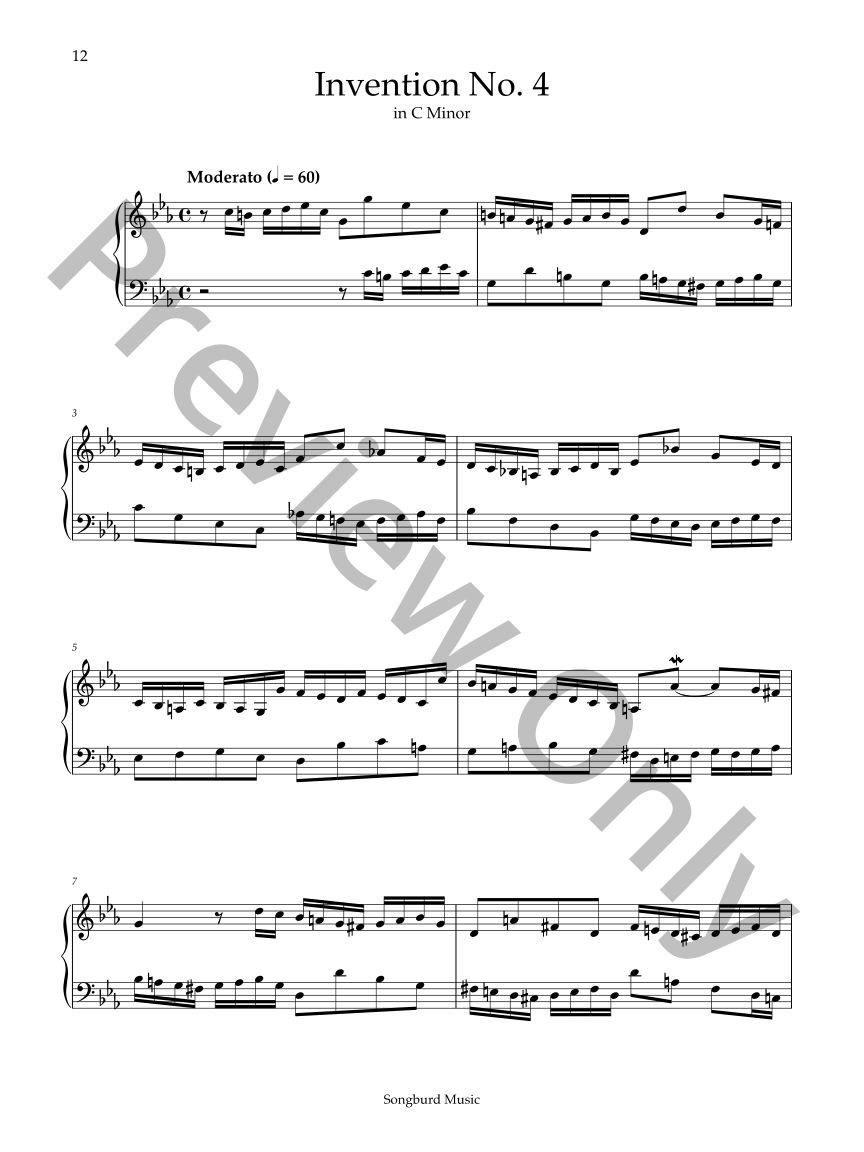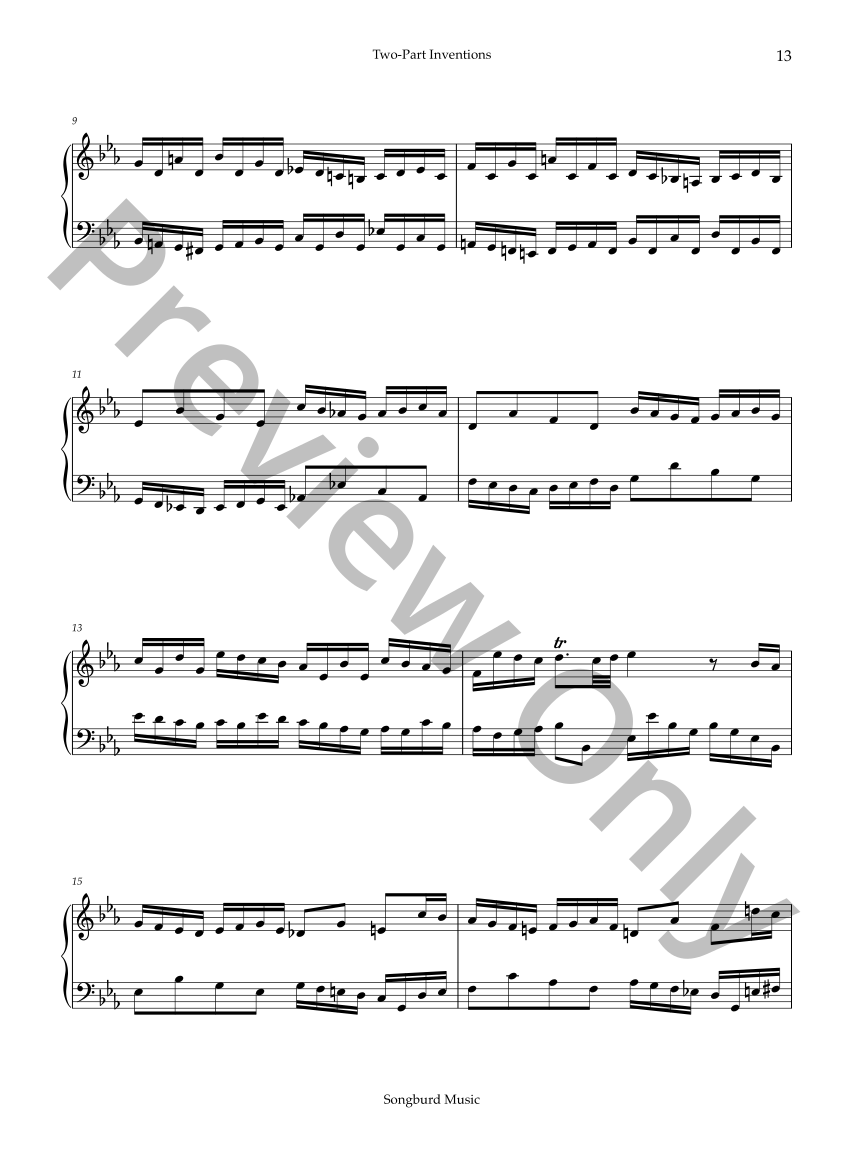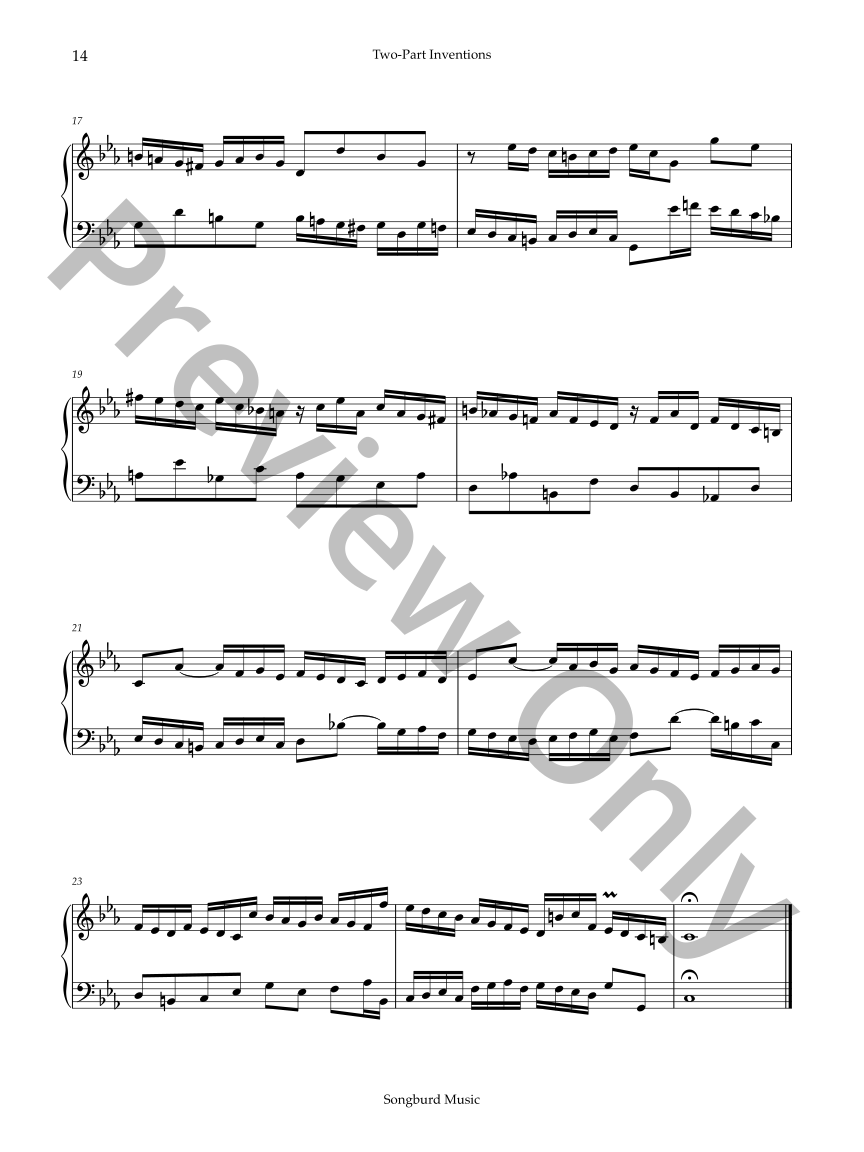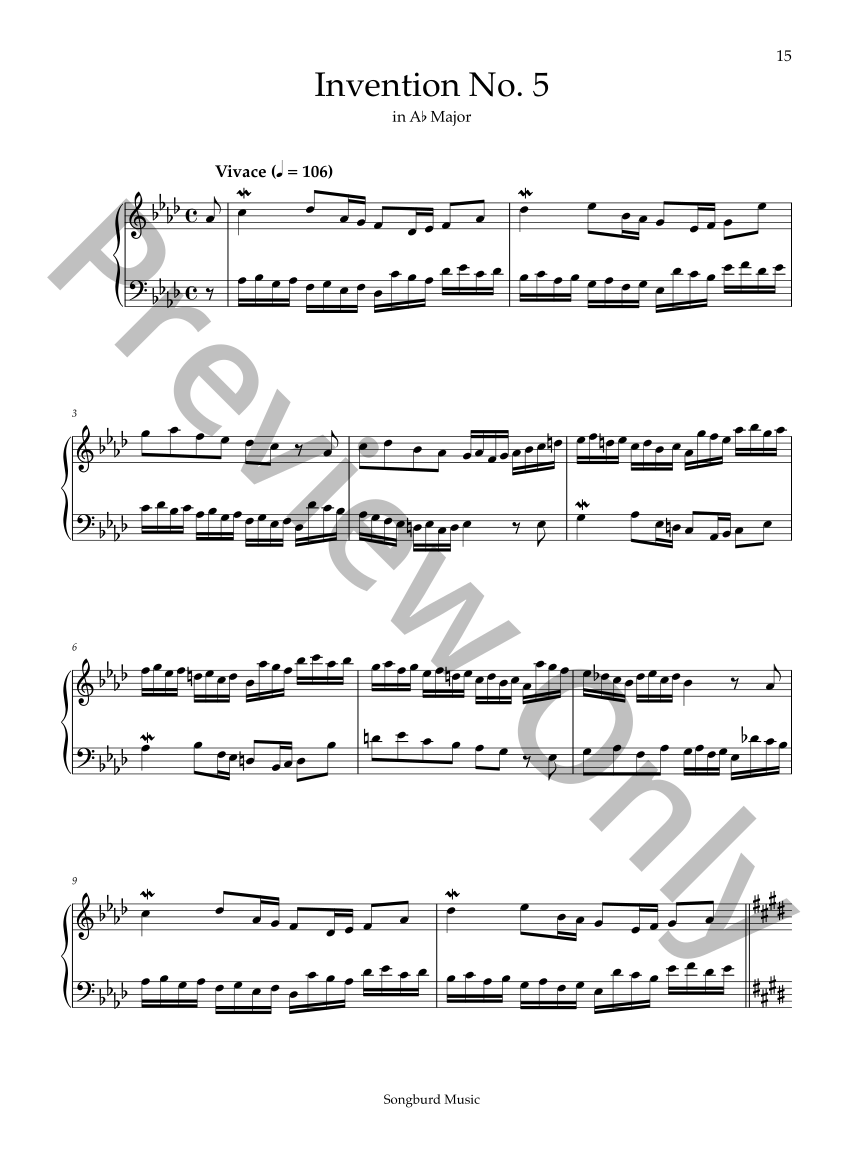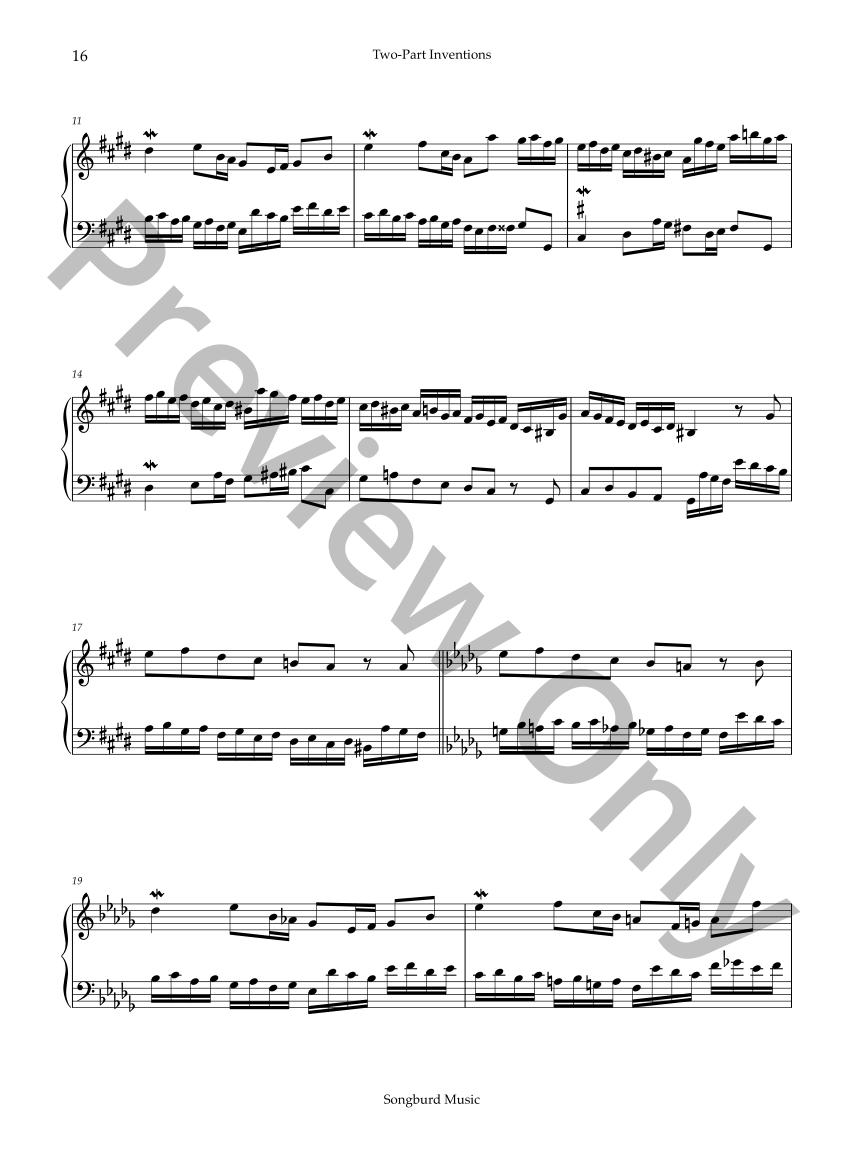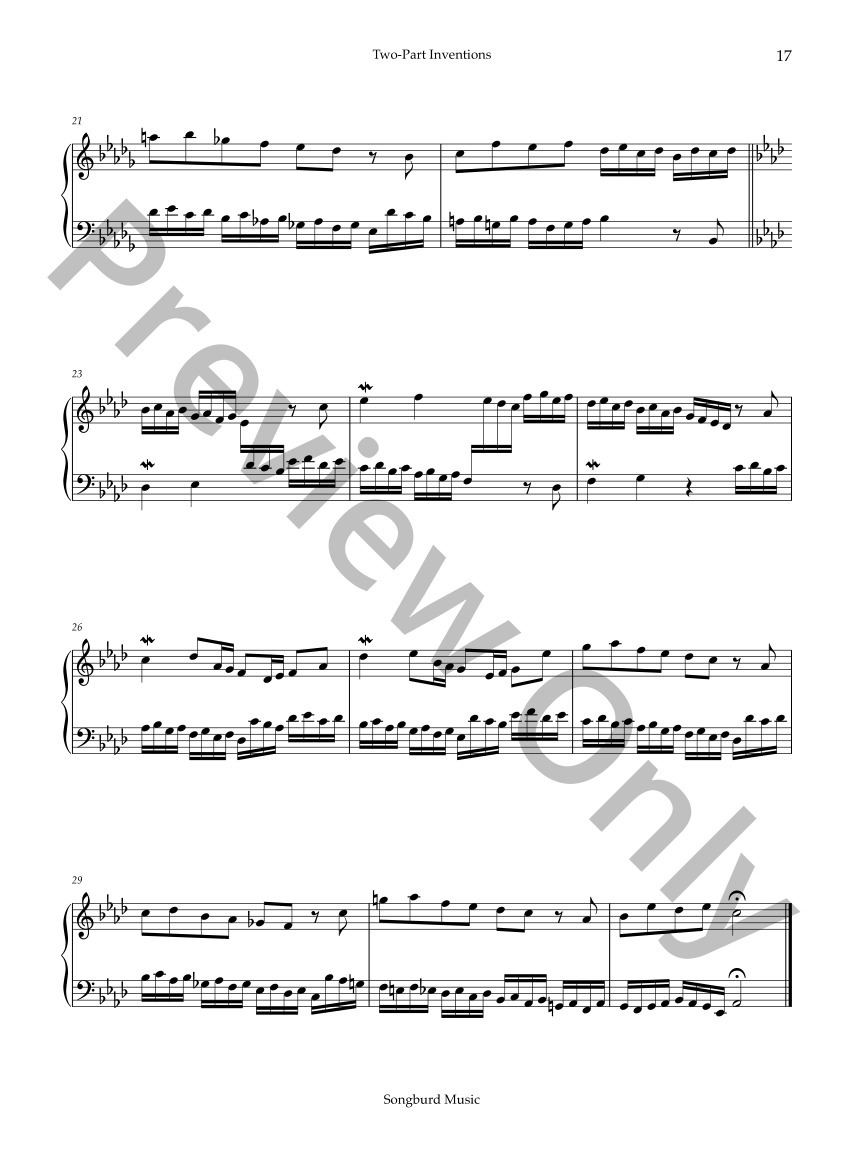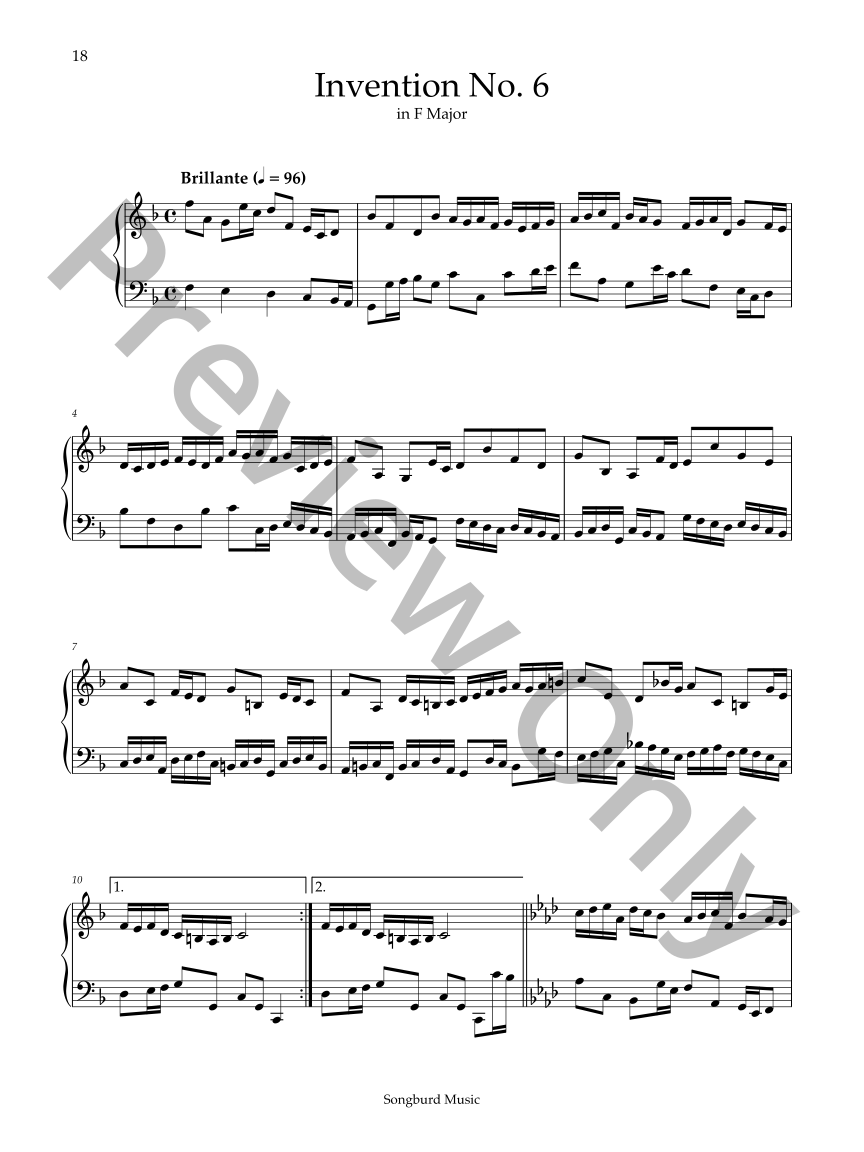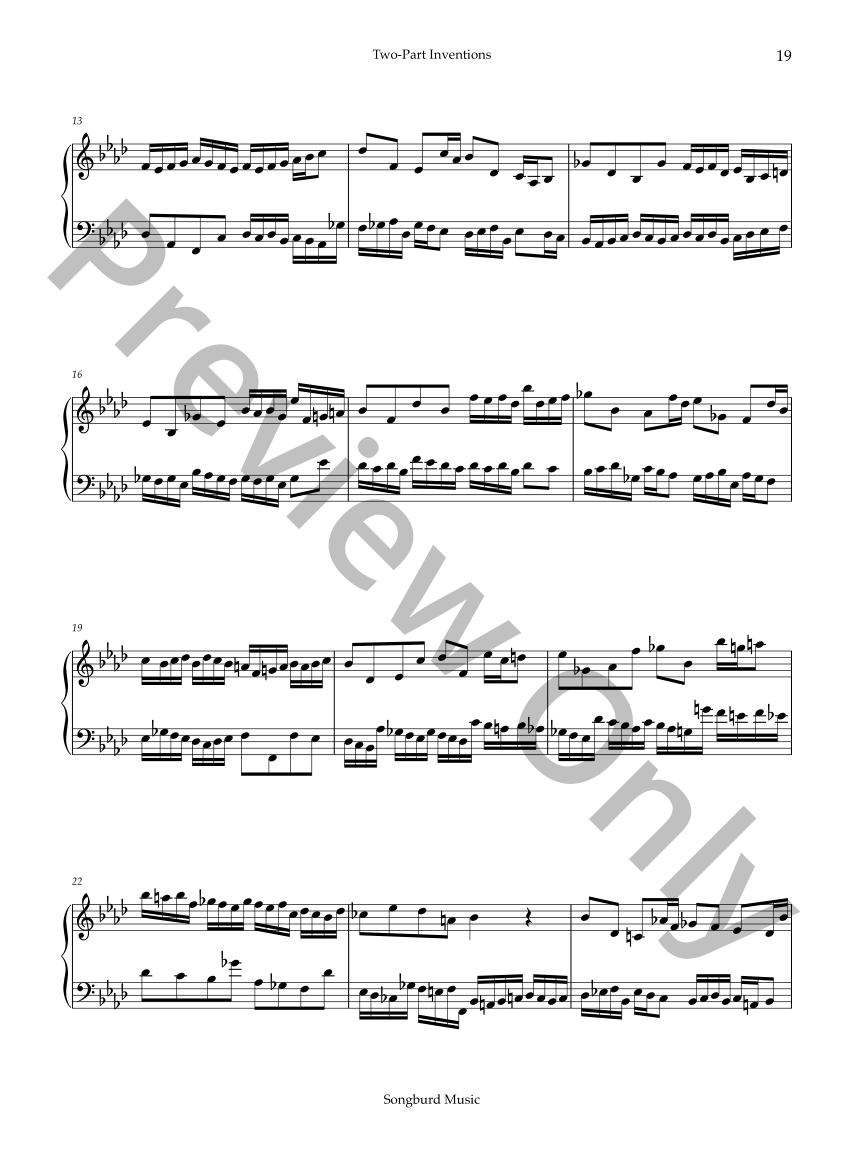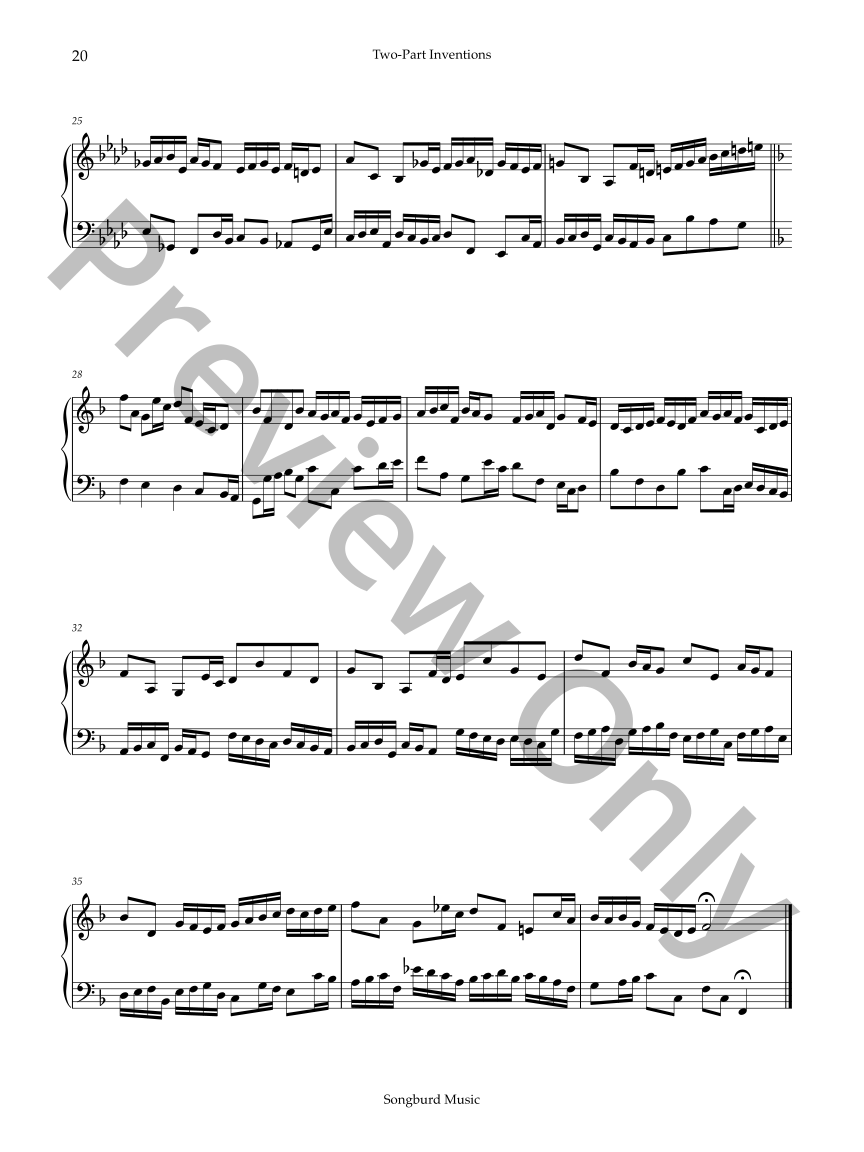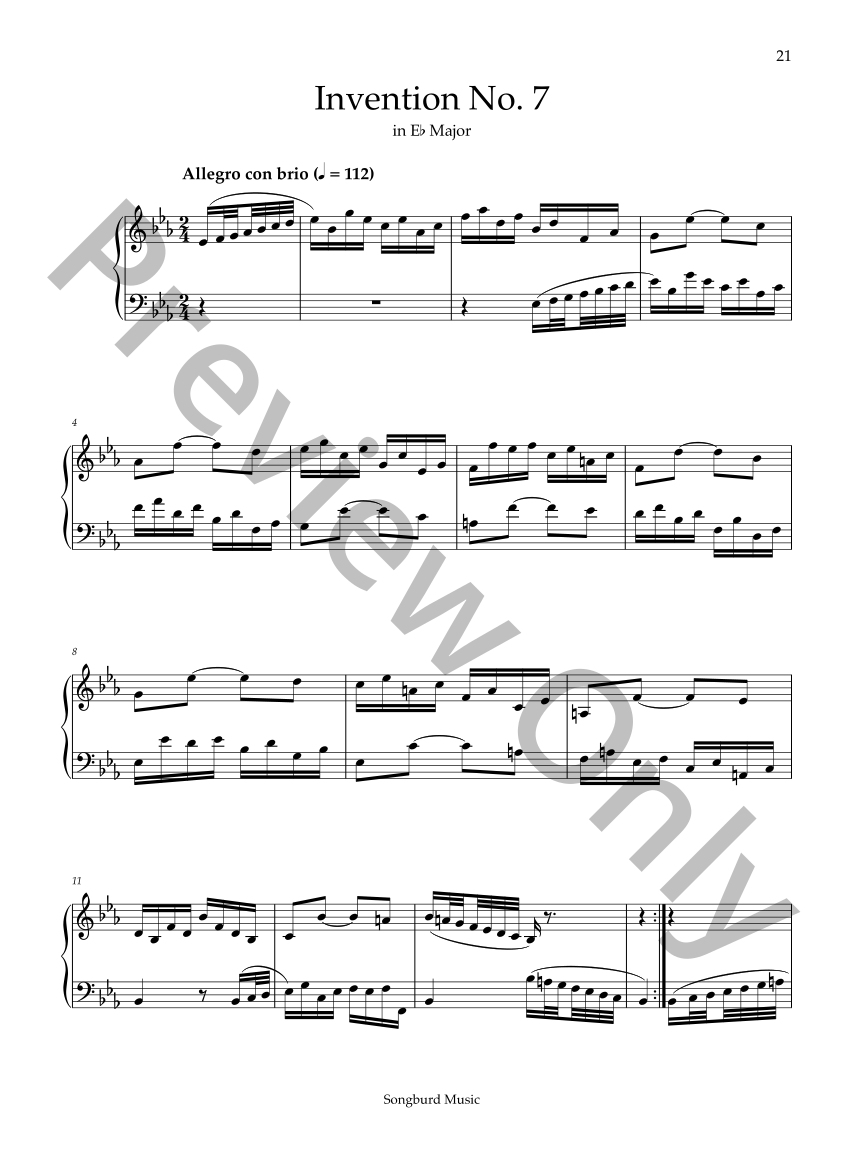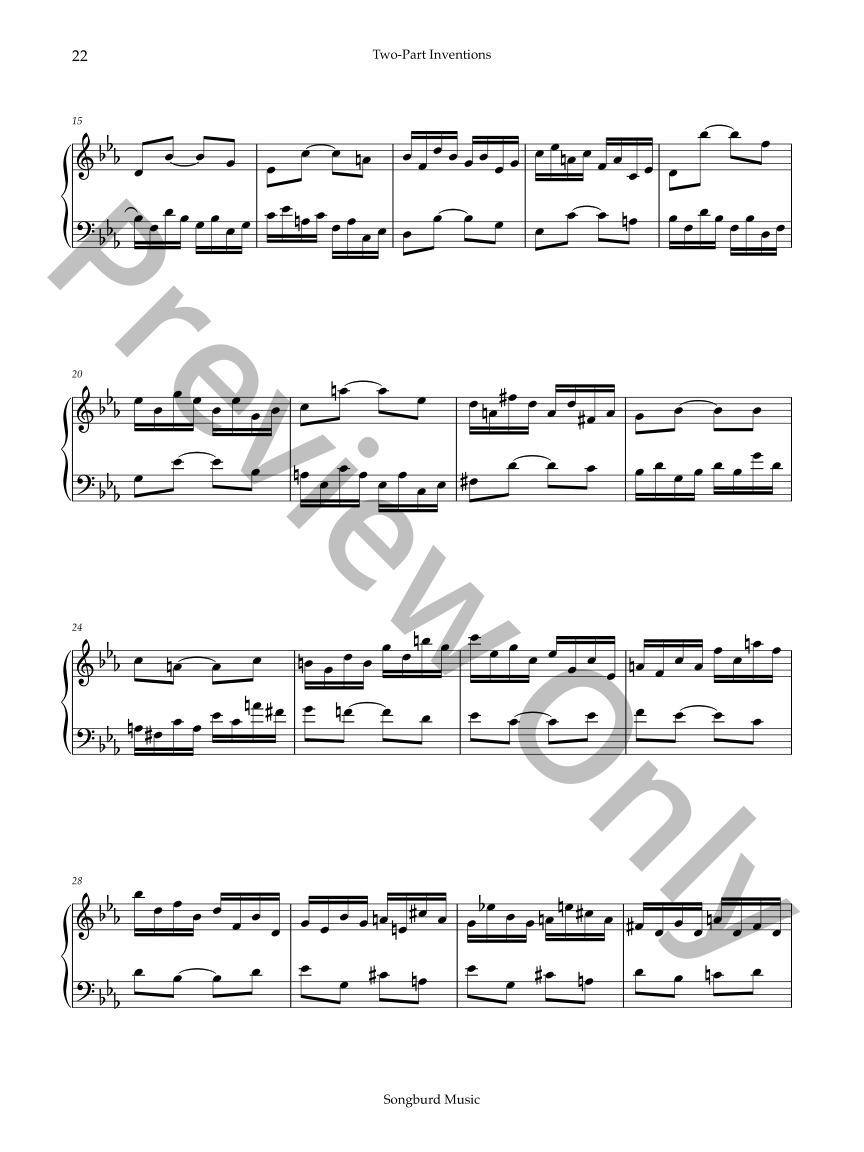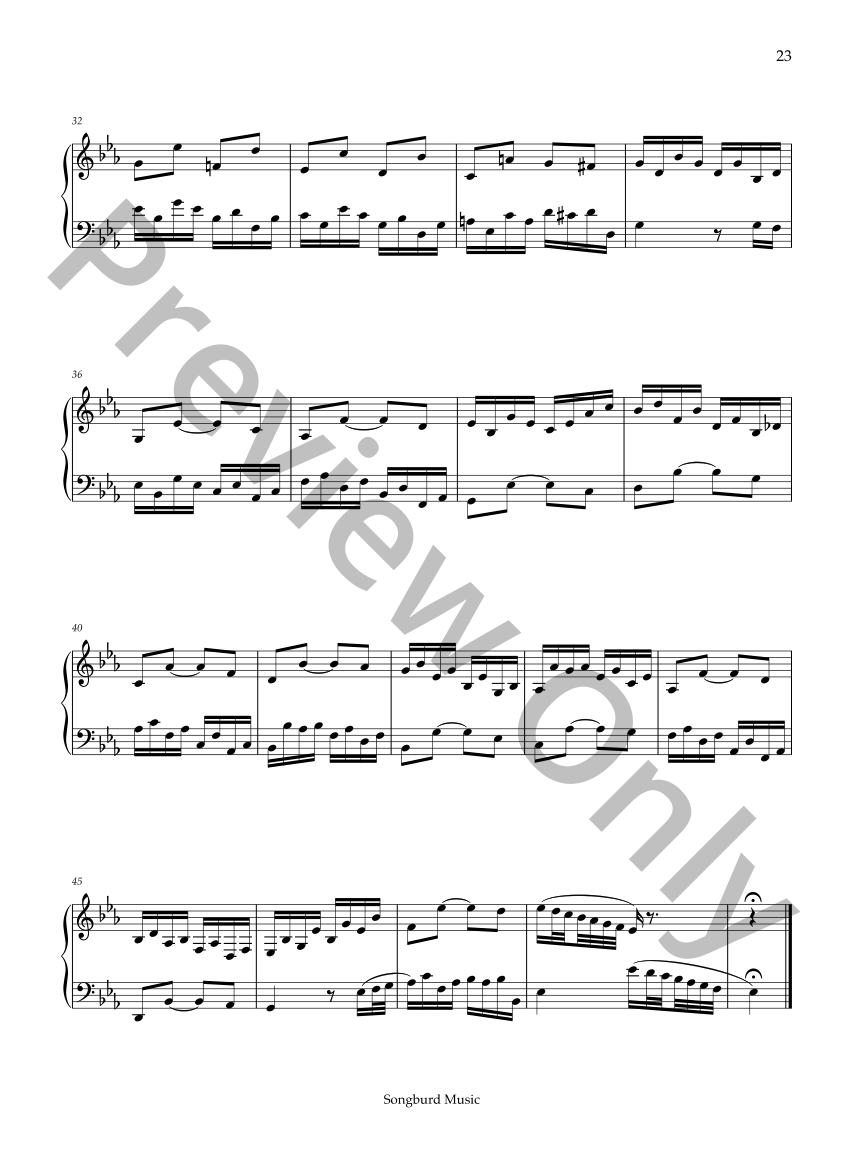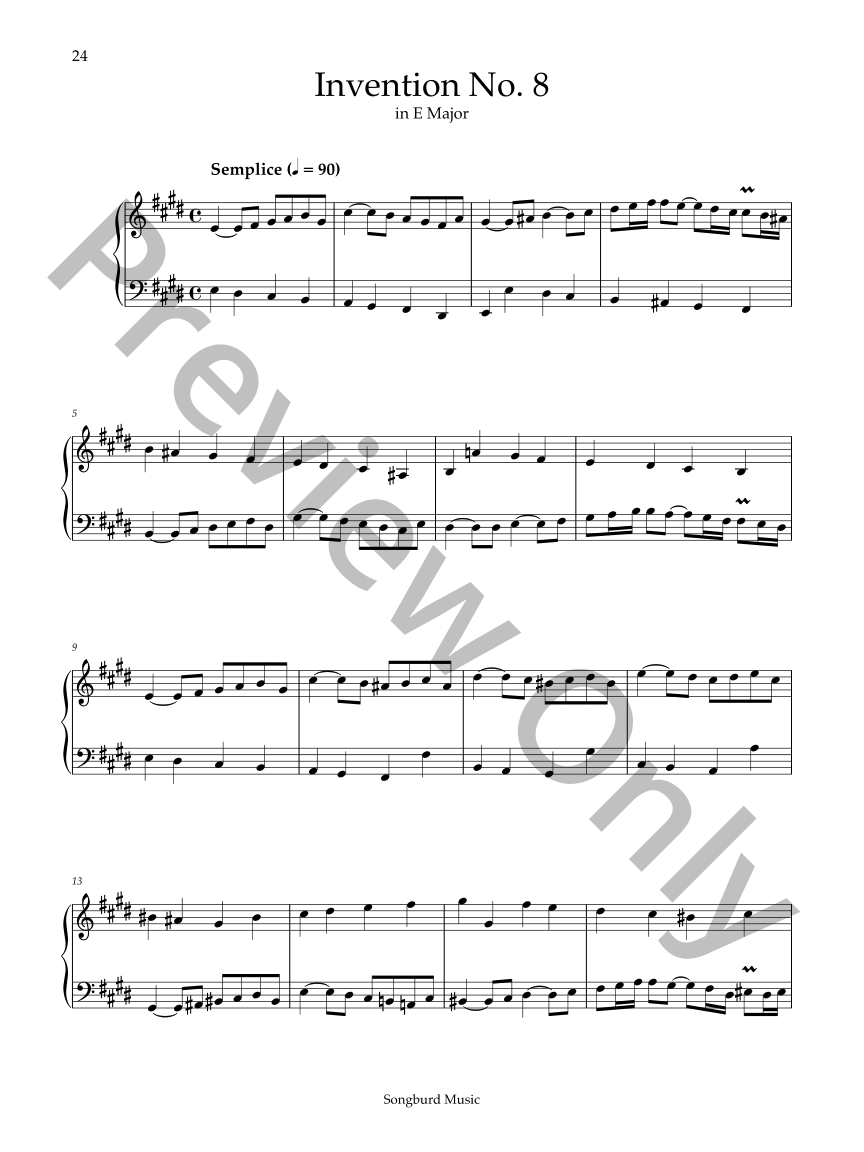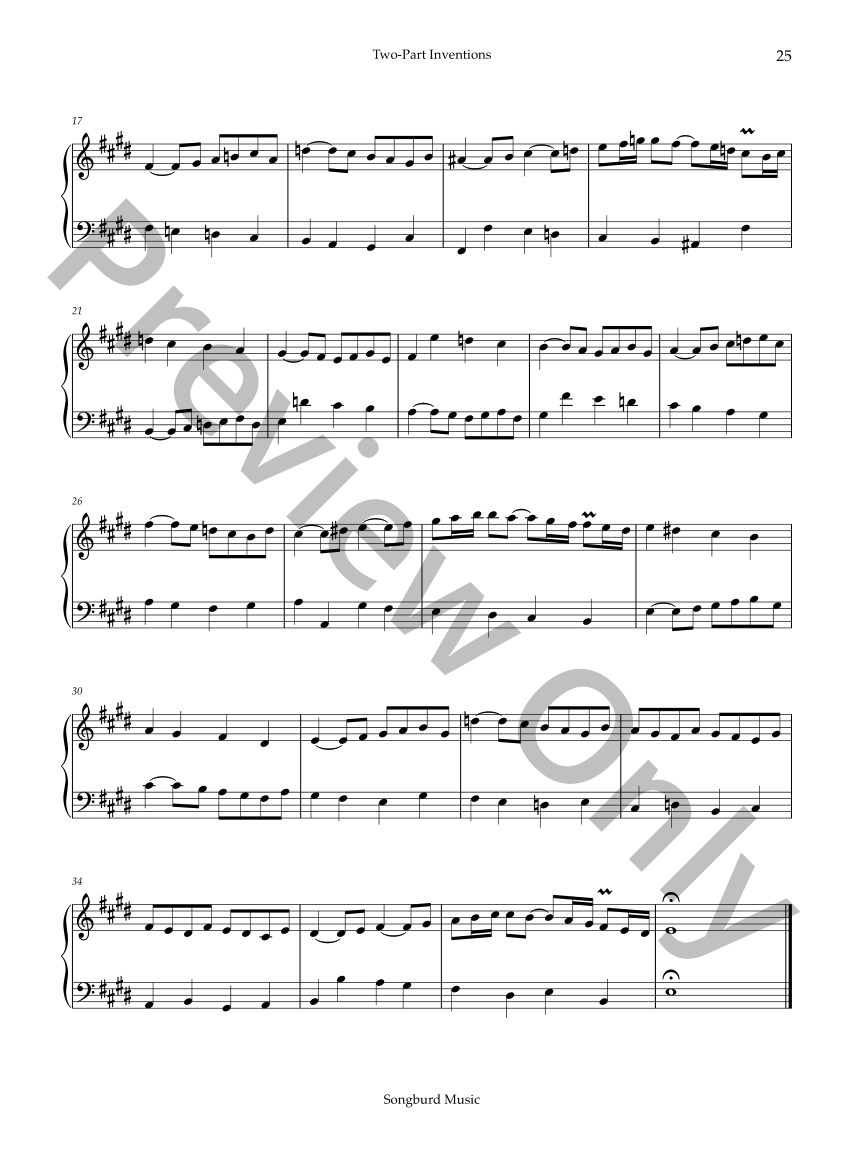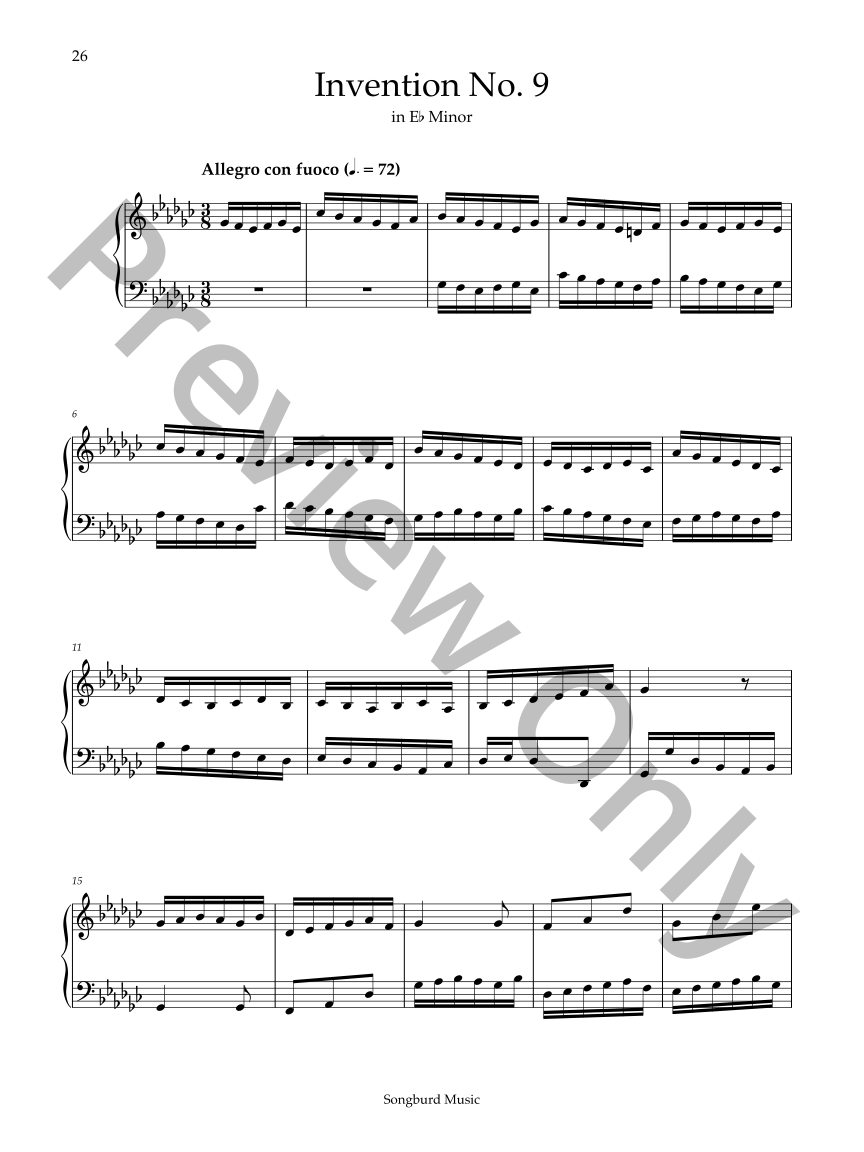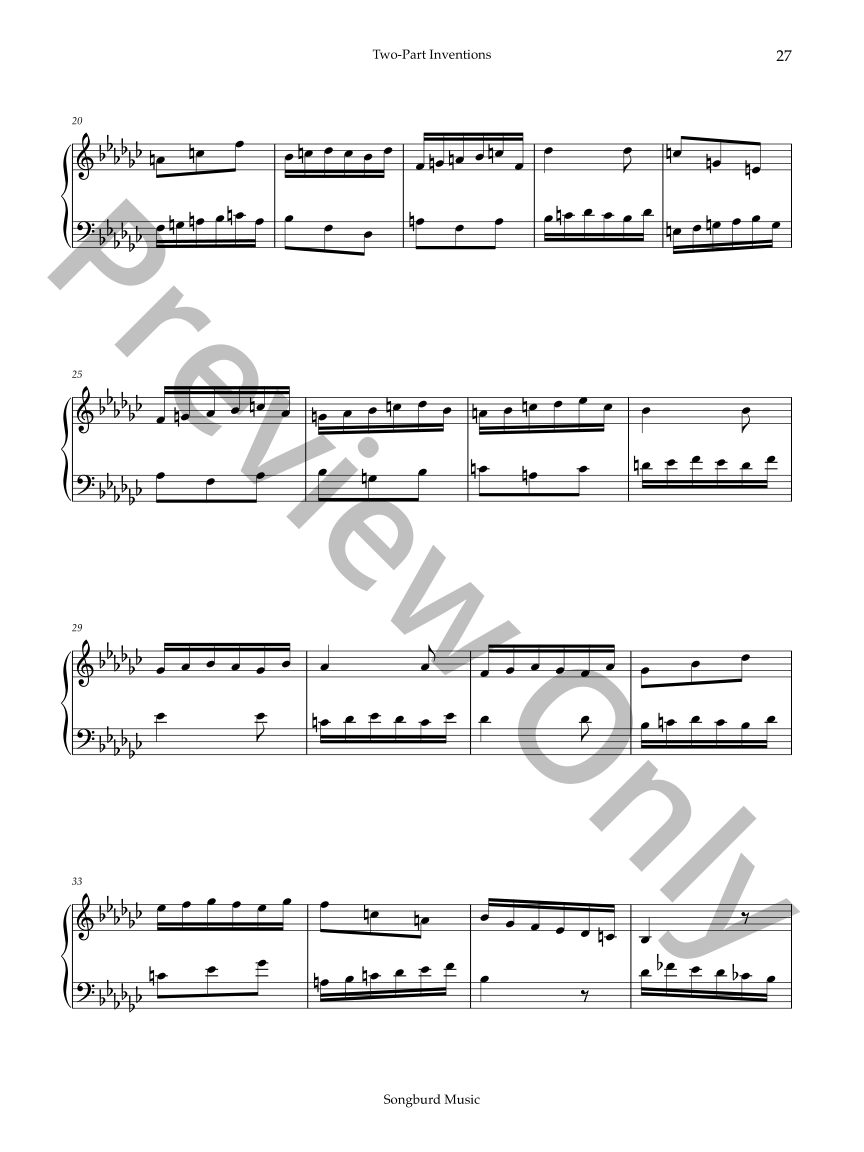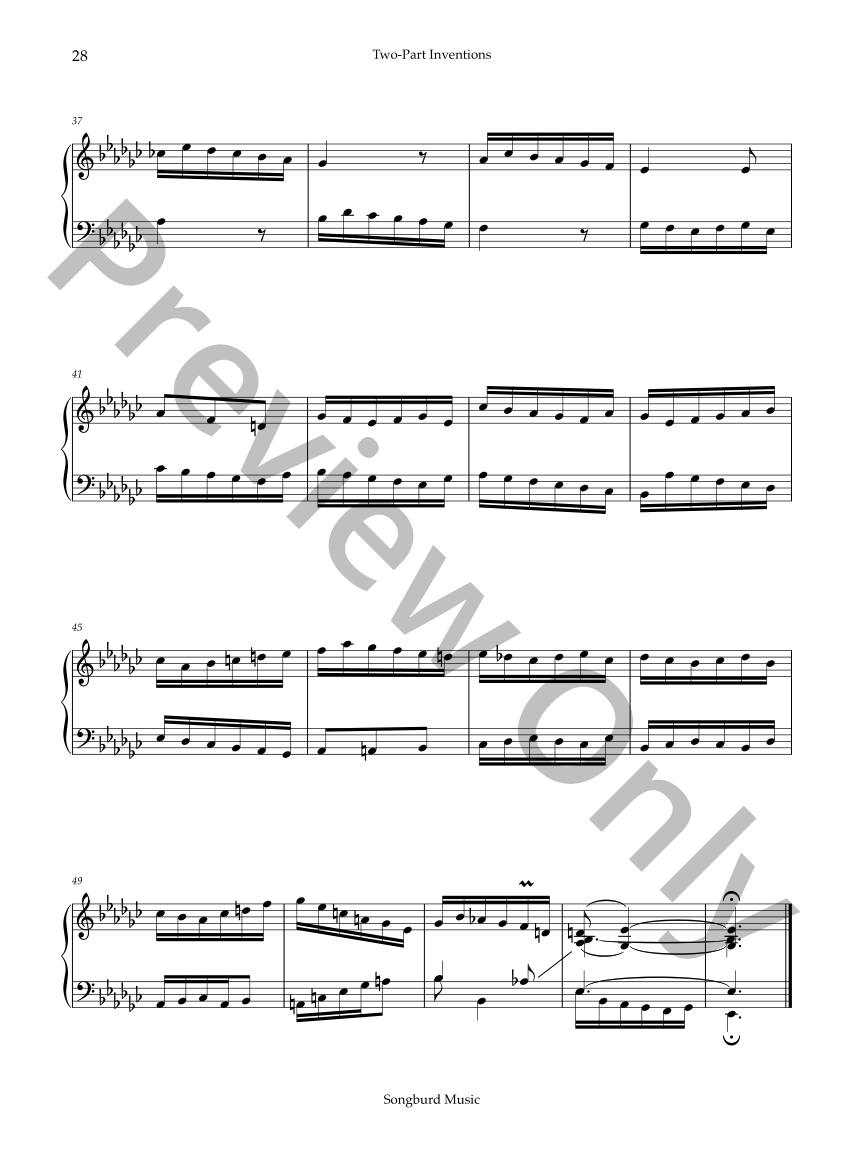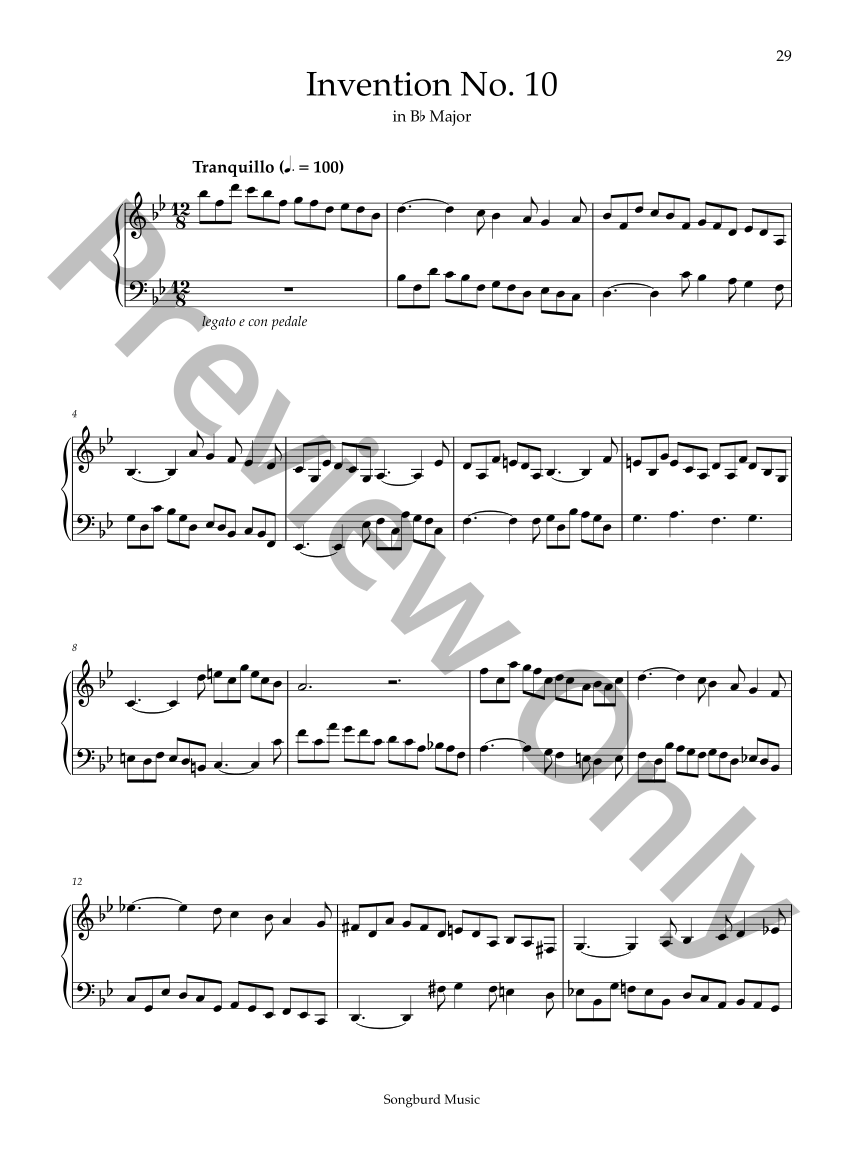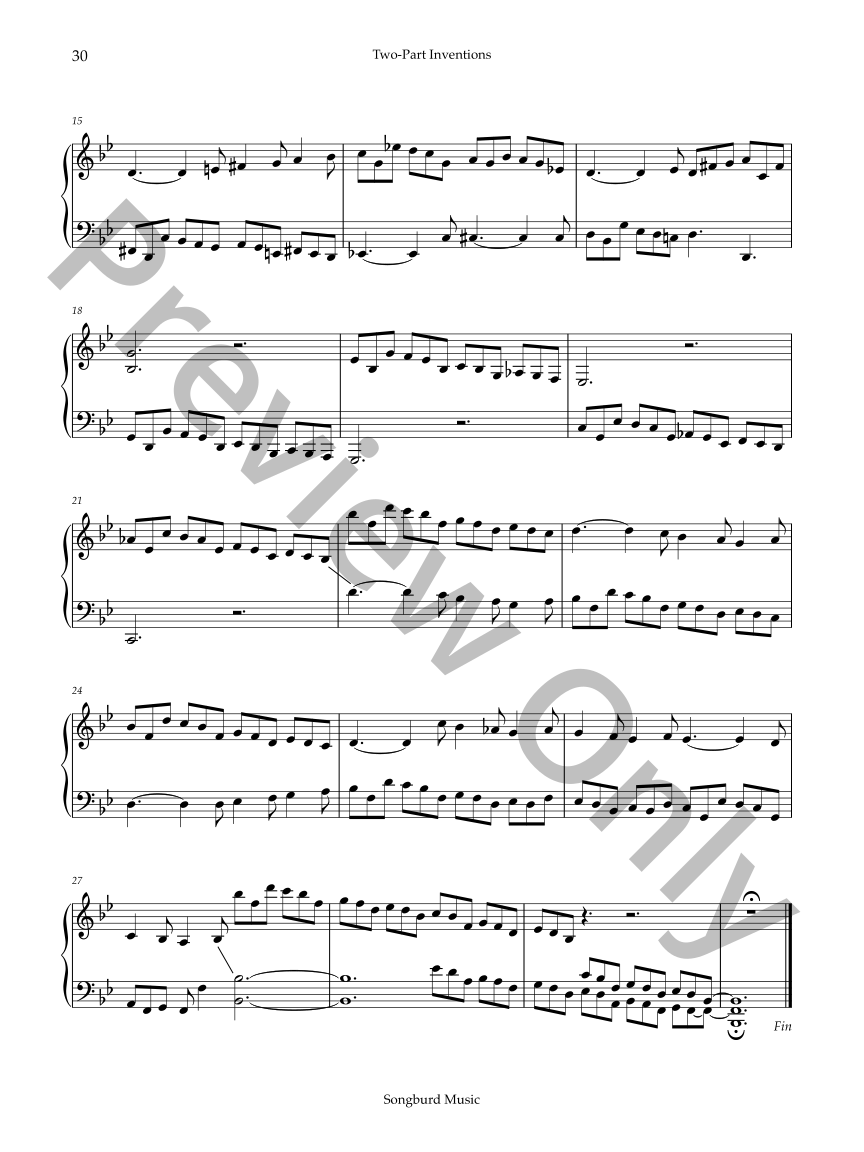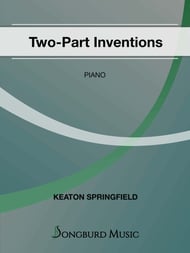
Two-Part Inventions
Publisher Desc.
The Two-Part Inventions by Keaton Springfield take their inspiration from the Two-Part Inventions of J.S. Bach. As students of music become familiar with the inventions of J.S. Bach in the course of their studies, it is unsurprising that they should come to admire and champion these works in music studios and performances.
For composers, these works present an opportunity to learn from, model and at times emulate musical styles of the Baroque. While these two-part inventions are Baroque in nature, musical elements are present that exceed their historical bounds such as the modulations found in No. 5 and No. 6.
Performance considerations have been made for the sake of practical instruction, while still retaining a Baroque aesthetic. For example, typical pieces of the Baroque era are without tempi or dynamic indications. In keeping with this, the tempi provided in parenthesis should be viewed only as recommended approximations and not as fixed directives. Liberty is also afforded to the performer and music teacher regarding dynamics, which are entirely absent in the score.
Performers are encouraged to seek out their own inspiration on the matter of dynamics and tempi through experimentation and a judicious ear. The provided ornamentation may be augmented or even done away with entirely depending on the needs and tastes of the performer.
While the range of style and difficulty in this collection varies widely, it is suitable for use in music education, worship service, and public performance. For piano instructors, the following order is recommended to fit a general progressive study: 8, 2, 4, 3, 1, 10, 9, 6, 5, 7, which may be adjusted to accommodate the skills and temperament of individual students.
Copyright:
:
©2021
Select a Product
My Library

